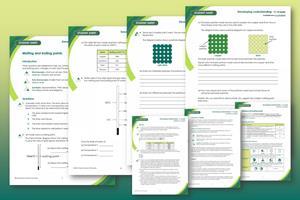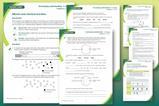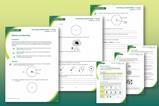Support your learners to develop mental models and deepen understanding of melting and boiling points
Developing understanding is a series of resources that encourage learners to connect their thinking at the macroscopic, sub-microscopic and symbolic levels.
-

Download this
A ramped worksheet to help learners develop their mental models of melting and boiling points. With icons to indicate the conceptual level/s of each question.
View and download more Developing understanding worksheets
Learning objectives
- Recognise that a pure sample of a substance has a single sharp melting point.
- Use melting and boiling point data to deduce the state of materials at given temperatures.
- Describe the change in arrangement and movement of particles when a substance melts.
- Explain why the idea of forces of attraction between particles is necessary to explain differences in melting point.
This resource aims to develop learners’ understanding of melting and boiling points and changes of state. The questions encourage learners to think about what the particle model can and cannot explain. As a result, learners should develop more secure mental models to support their thinking about this topic.
- When to use? Use after initial teaching or discussion of this topic to develop ideas further. You can also use as a revision activity.
- Group size? Suitable for independent work either in class or at home. Or use the questions for group or class discussions.
- How long? 15–30 mins
Johnstone’s triangle
Johnstone’s triangle is a model of the three different conceptual levels in chemistry: macroscopic, symbolic and sub-microscopic. You can use Johnstone’s triangle to build a secure understanding of chemical ideas for your learners.
Introduce learners to Johnstone’s triangle with our Melting and boiling water Johnstone’s triangle worksheet which guides learners to observe water changing state and then describe the process at a macroscopic, sub-microscopic and symbolic level.
Further reading
Read more about how to use Johnstone’s triangle in your teaching with these articles:
- Develop deeper understanding with models
- Improve students’ understanding with Johnstone’s triangle
- Practical ideas for using Johnstone’s triangle
Norman Reid’s book The Johnstone Triangle: The Key to Understanding Chemistry provides an more in-depth overview, the first chapter is available to read online.
Johnstone’s triangle and this resource
The icons in the margin indicate which level of understanding each question is developing to help prompt learners in their thinking.
- Macroscopic: what we can see. Think about the properties that we can observe, measure and record.
- Sub-microscopic: smaller than we can see. Think about the particle or atomic level.
- Symbolic: representations. Think about how we represent chemical ideas including symbols and diagrams.
The levels are interrelated, for example, learners need visual representation of the sub-microscopic in order to develop mental models of the particle or atomic level. Our approach has been to apply icons to questions based on what the learners should be thinking about.
Questions may be marked with two or all three icons, indicating that learners will be thinking at more than one level. However, individual parts of the question may require learners to think about only one or two specific levels at a time.
Support
This worksheet is ramped so that the earlier questions are more accessible. The activity becomes more challenging in the later questions. You can give extra explanations for the more challenging questions. If completing as an in-class activity it is best to pause and check understanding at intervals, as often one question builds on the previous one.
It is useful for learners to observe macroscopic properties first-hand. You could circulate examples of substances in the classroom, run a class practical of a chemical reaction or show a teacher demonstration of properties.
Give learners physical models to use and manipulate, such as a Molymod™ kits or counters.
Additional support may be needed for any learners still lacking in confidence in the required symbolic representation, for example by sharing and explaining a diagram or a simulation that can show movement of the particles.
Answers and guidance
There are four multi-part questions in the student worksheet. The first question develops learners’ understanding of the sharp melting point of a pure metal compared with an impure sample melting over a range of temperatures (macroscopic understanding). The second question develops learners’ understanding of the link between melting point and the state of a substance at a given temperature above or below that melting point (macroscopic understanding).
The third question asks learners to determine the state of water at a given temperature based on known melting and boiling points (macroscopic understanding). The final question develops learners’ understanding of the particle model for the solid and liquid states (sub-microscopic understanding) and encourages them to consider the limiations of the basic particle model which cannot explain the difference in melting point (macroscopic understanding) between two metals.
Downloads
Developing understanding of melting and boiling points student sheet
Handout | PDF, Size 0.3 mbDeveloping understanding of melting and boiling points teacher notes and answers
Handout | PDF, Size 0.17 mbDeveloping understanding of melting and boiling points student sheet
Editable handout | Word, Size 0.78 mbDeveloping understanding of melting and boiling points teacher notes and answers
Editable handout | Word, Size 0.52 mb

























No comments yet